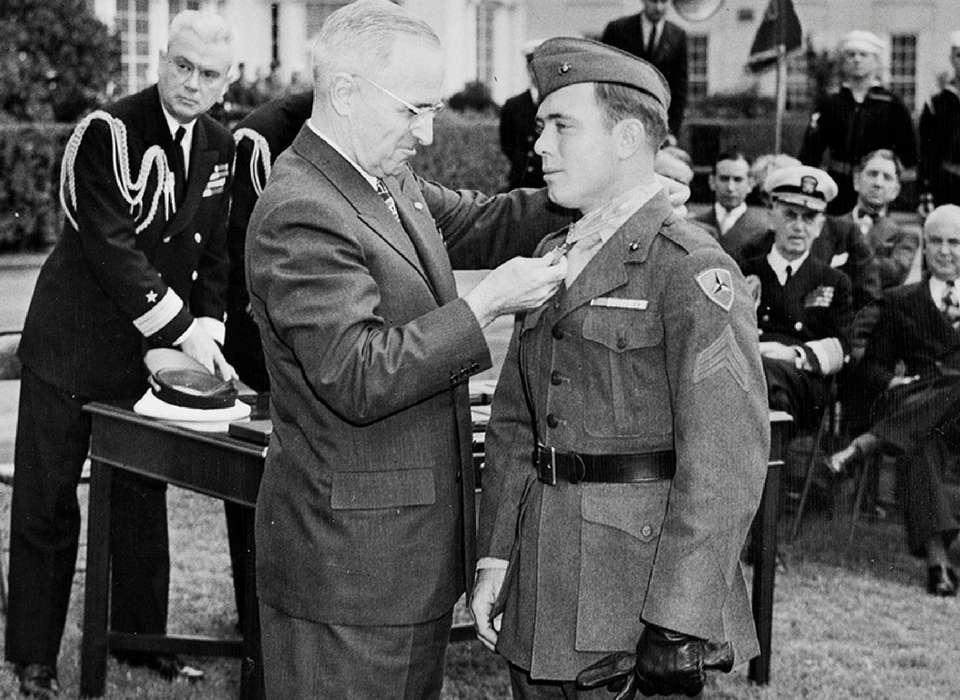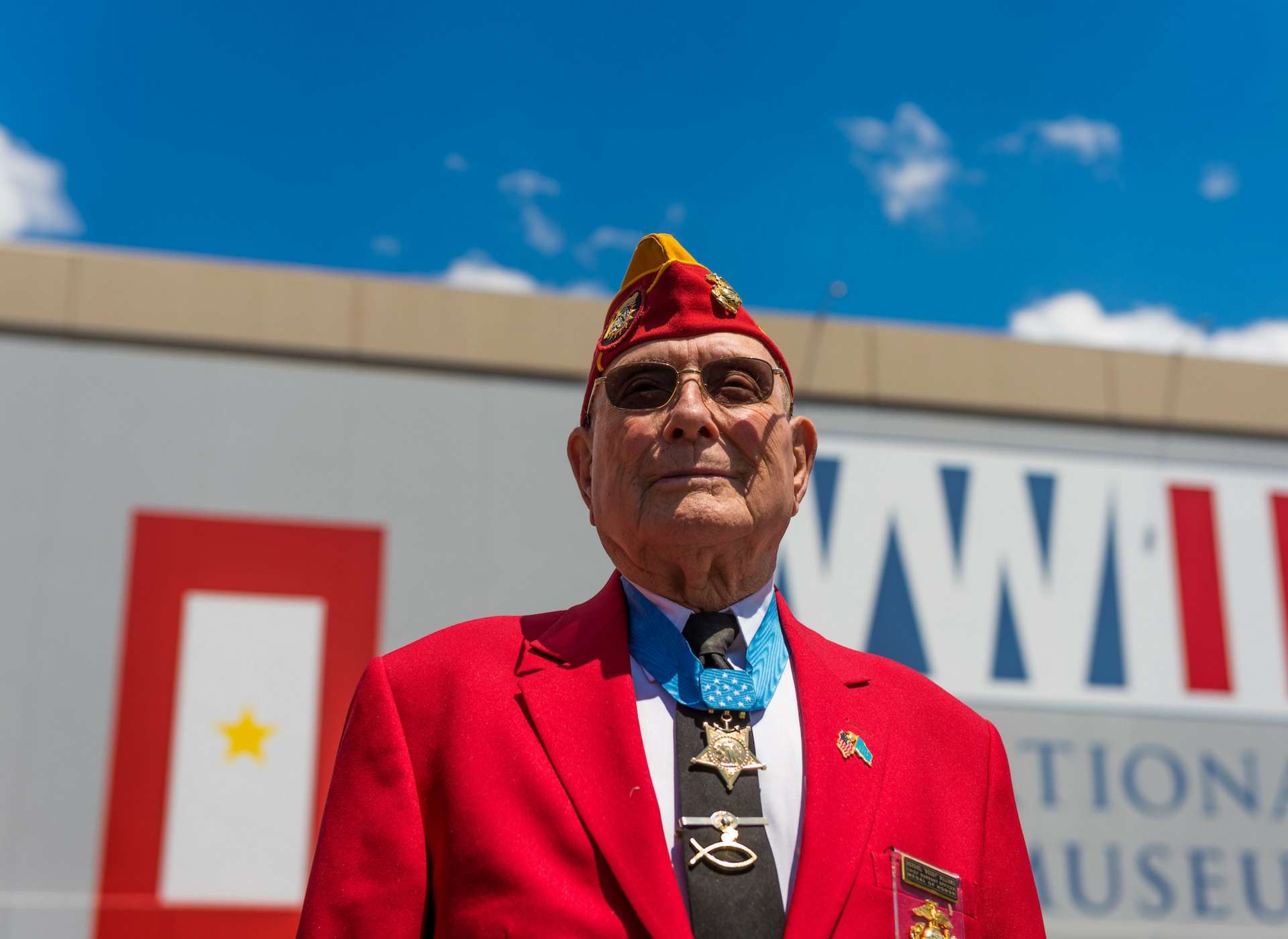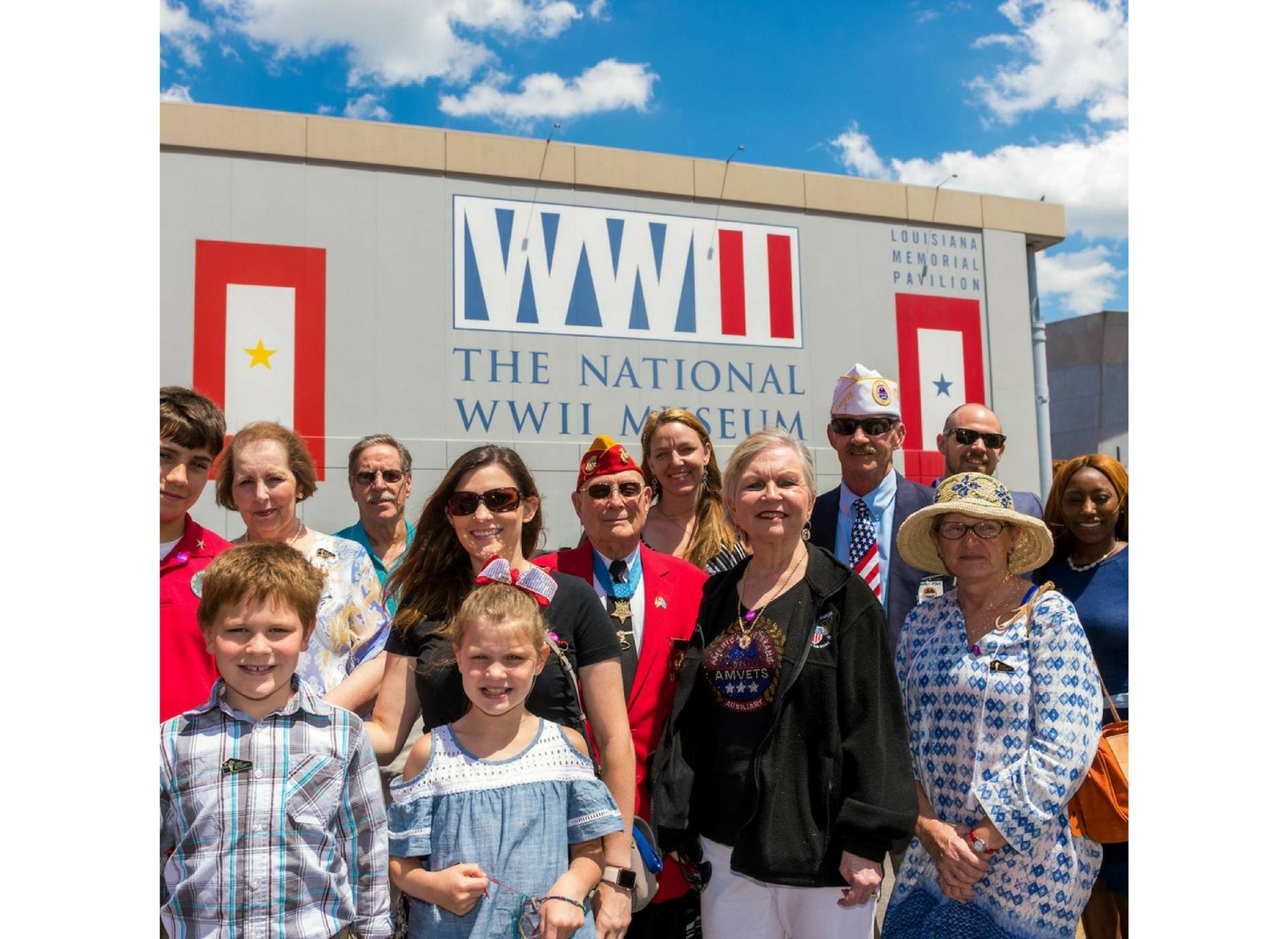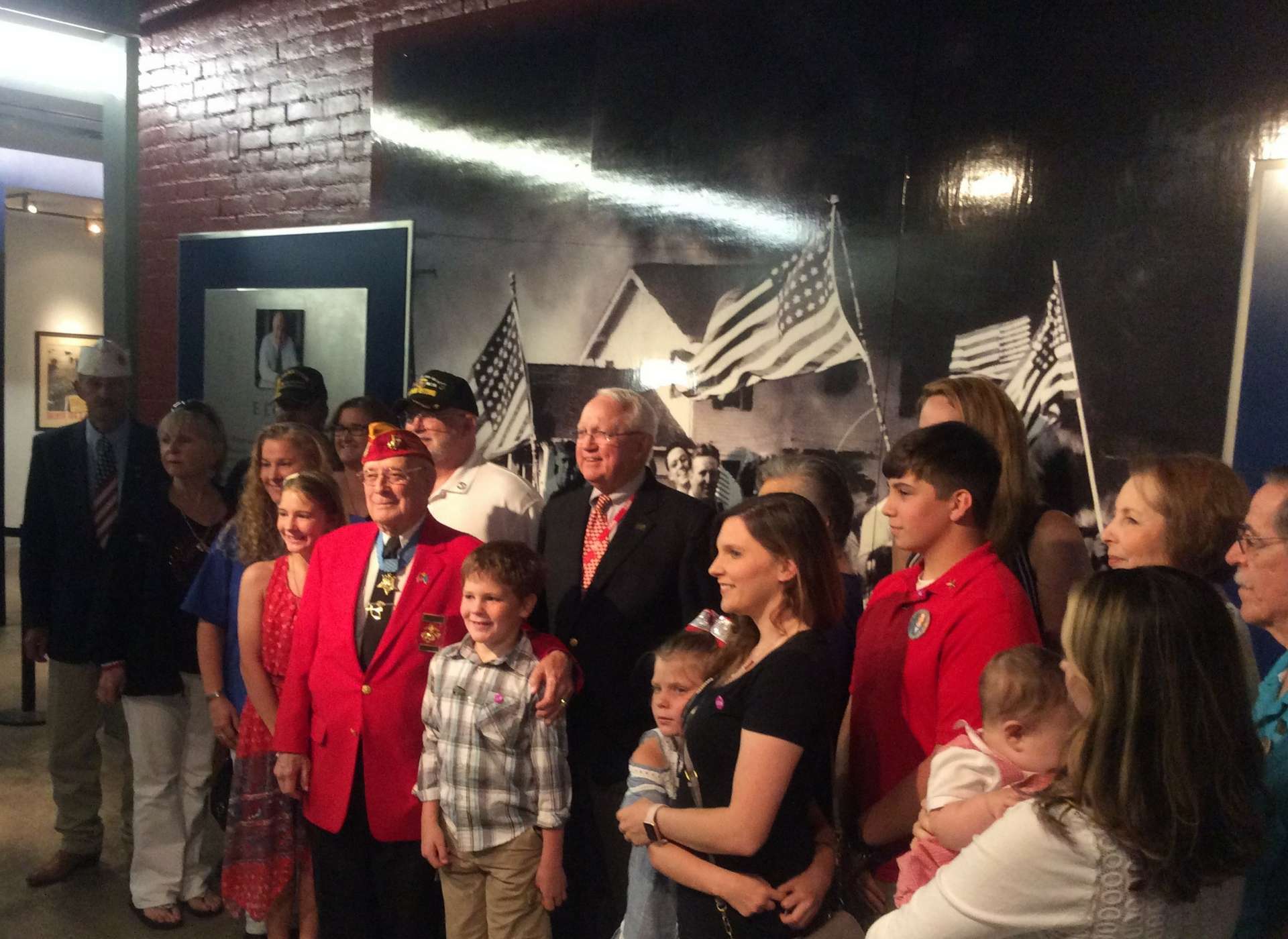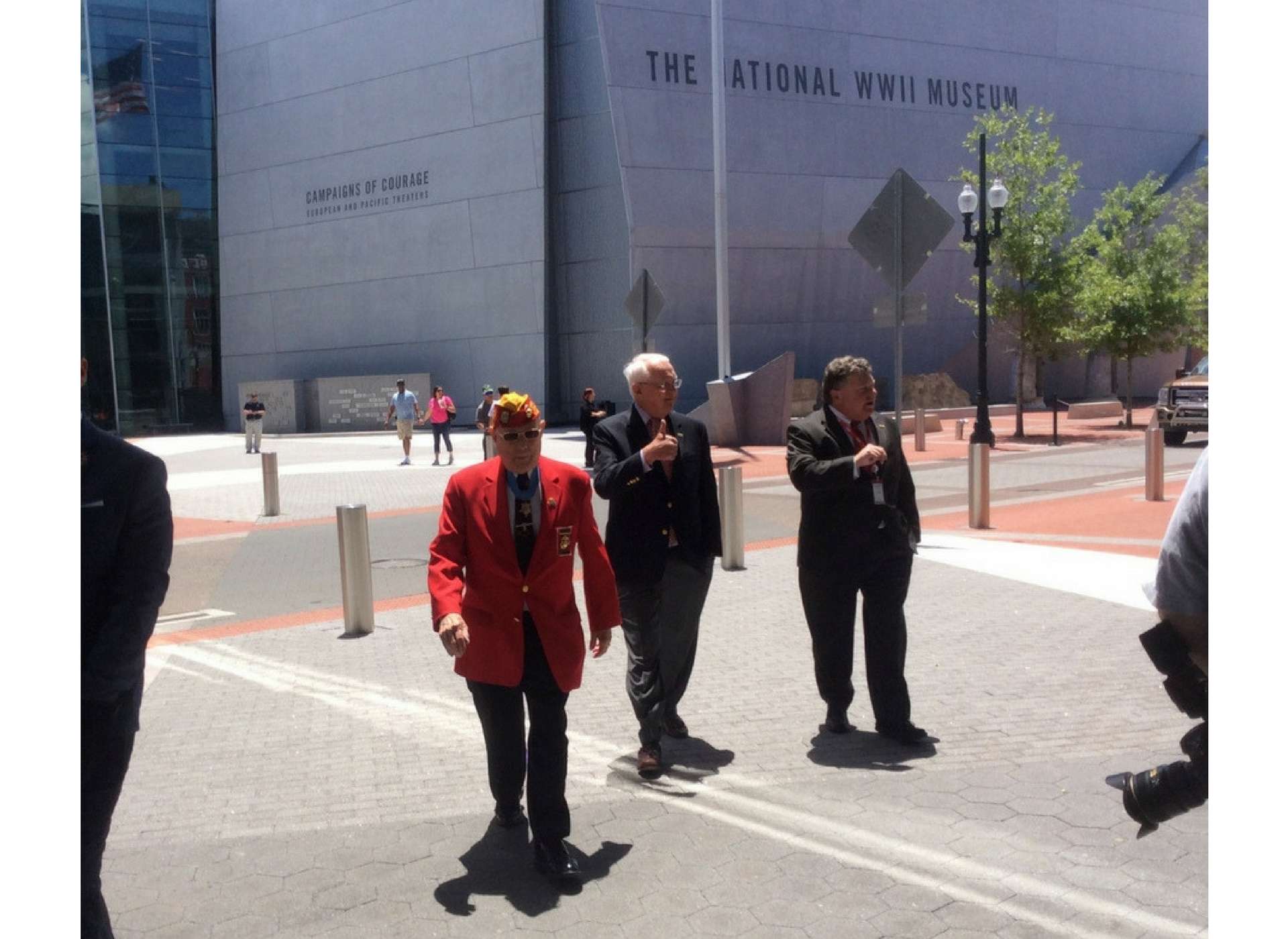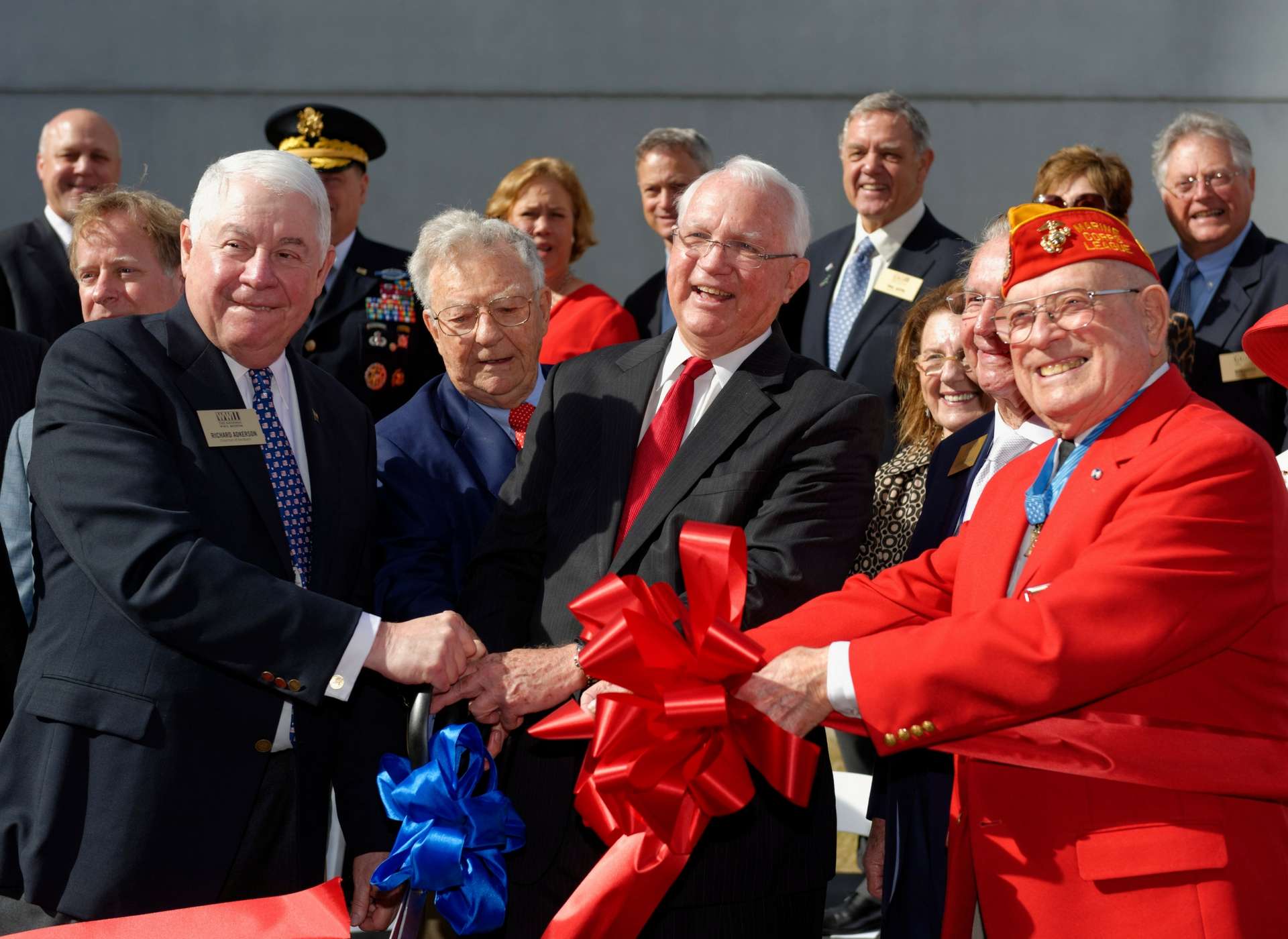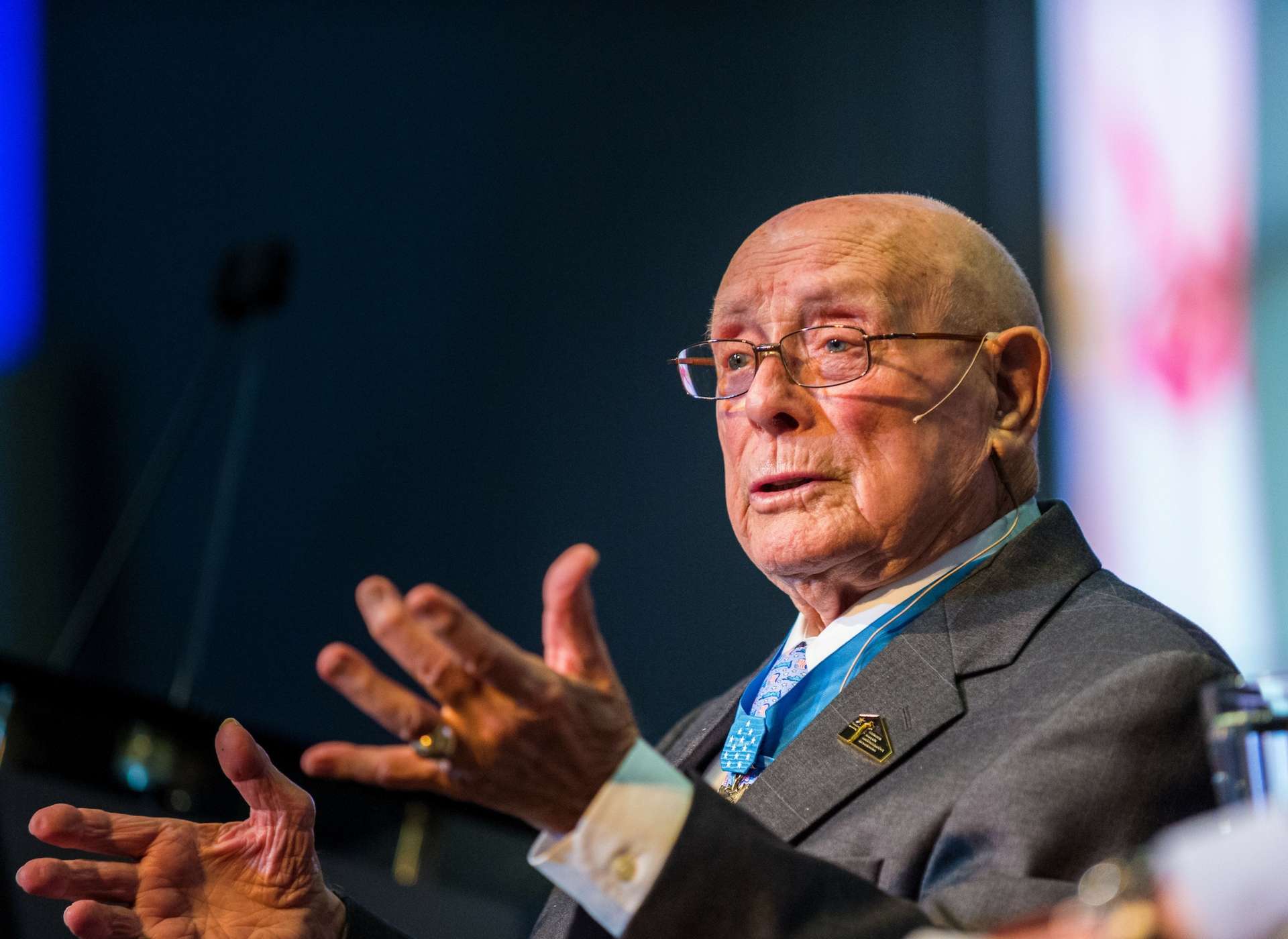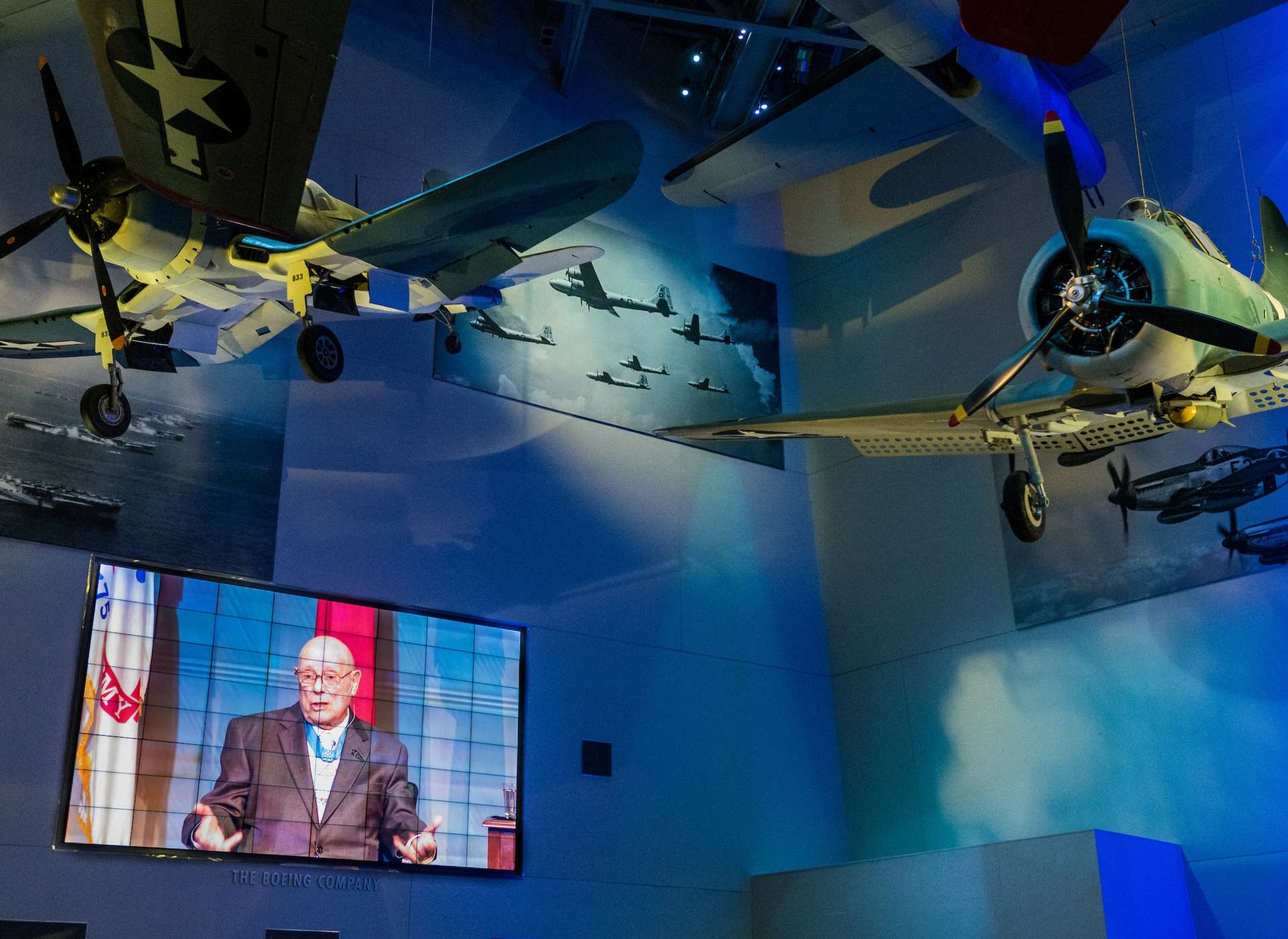For "conspicuous gallantry and intrepidity at the risk of his life above and beyond the call of duty," Hershel “Woody” Williams received the Medal of Honor on October 4, 1945, from President Harry S. Truman.
Initially rejected by the US Marine Corps for being too short, Williams arrived on Iwo Jima on February 21, 1945, as a demolition sergeant serving with the First Battalion, 21st Marines, Third Marine Division. In action against the Japanese two days later—the same day as the flag-raising on Mount Suribachi—Williams was quick "to volunteer his services when our tanks were maneuvering vainly to open a lane for the infantry through the network of reinforced concrete pillboxes, buried mines, and black volcanic sands," reads his Medal of Honor citation. "Corporal Williams daringly went forward alone to attempt the reduction of devastating machine-gun fire from the unyielding positions. Covered only by four riflemen, he fought desperately for four hours under terrific enemy small-arms fire and repeatedly returned to his own lines to prepare demolition charges and obtain serviced flamethrowers, struggling back, frequently to the rear of hostile emplacements, to wipe out one position after another.
"On one occasion, he daringly mounted a pillbox to insert the nozzle of his flame thrower through the air vent, kill the occupants and silence the gun; on another he grimly charged enemy riflemen who attempted to stop him with bayonets and destroyed them with a burst of flame from his weapon.
"His unyielding determination and extraordinary heroism in the face of ruthless enemy resistance were directly instrumental in neutralizing one of the most fanatically defended Japanese strong points encountered by his regiment and aided in enabling his company to reach its objective. Corporal Williams' aggressive fighting spirit and valiant devotion to duty throughout this fiercely contested action sustain and enhance the highest traditions of the United States Naval Service."
Williams describes that day in his oral history for the Museum. An excerpt from the complete oral history is below. Also below is the archived video of the closing keynote address Williams delivered at the 2017 International Conference on World War II.
Prior to the Conference, Williams most recently visited the Museum in May 2017 to see for the first time a new Gold Star mural—a lasting tribute to families who have lost a loved one in the service of the nation’s military—made possible by a generous gift from Williams’s Woody Williams Foundation. See photos below.
He was joined by several Gold Star Families. The mural is located on the Camp Street side of the Louisiana Memorial Pavilion.
According to its mission statement, the Woody Williams Foundation honors "Gold Star Families, Relatives and Children by building Gold Star Families Memorial Monuments throughout the United States, by offering scholarships to Gold Star Children, by sponsoring outreach programs and events and by educating communities about Gold Star Families and the sacrifice they have endured."
In December 2015, Williams participated in the grand-opening ceremonies for the Richard C. Adkerson & Freeport-McMoRan Foundation Road to Tokyo: Pacific Theater Galleries.
-

Williams visited the Gold Star Mural for the first time in May 2017.
-

-

-

-

-

-

Cite this article:
MLA Citation:
APA Citation:
Chicago Style Citation:
